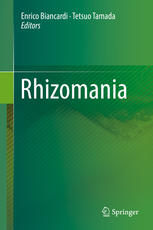

Most ebook files are in PDF format, so you can easily read them using various software such as Foxit Reader or directly on the Google Chrome browser.
Some ebook files are released by publishers in other formats such as .awz, .mobi, .epub, .fb2, etc. You may need to install specific software to read these formats on mobile/PC, such as Calibre.
Please read the tutorial at this link: https://ebookbell.com/faq
We offer FREE conversion to the popular formats you request; however, this may take some time. Therefore, right after payment, please email us, and we will try to provide the service as quickly as possible.
For some exceptional file formats or broken links (if any), please refrain from opening any disputes. Instead, email us first, and we will try to assist within a maximum of 6 hours.
EbookBell Team

5.0
100 reviewsThe knowledge of ecology and epidemiology of rhizomania is particularly useful to understand the means and practices able to limit or avoid its further diffusion. Some promising methods of biological control using coexisting and non-pathogenic organisms could potentially help improve the action of the not completely effective genetic resistances. This integrated protection would be valuable, especially in the even more frequent development of resistance–breaking strains in the BNYVV, where the known types of resistance, alone or in combination, seem to have lost part of their original ability to protect the crop. Therefore, further efforts will be needed to discover new traits likely still present in the wild species of the genus Beta. The availability of large collections of germplasm stored in the International Beta gene-banks should ensure the enhanced efficiency of genetic resistance by means of conventional and marker-assisted selection methods. Some almost immune transgenic varieties seem already to be waiting for release where and when it will be possible. The introduction chapter describes briefly the sugar beet crop, the more common diseases, and the damage caused by rhizomania. The following chapters discuss biological properties of the causal virus, BNYVV, and its vector, Polymyxa betae, and their interactions with the environment and the host-plant. In particular, the great advances in research of the molecular biology of BNYVV should be noteworthy, which have been established by a wide range of the most modern methods. Recent work focused on the genetic diversity and evolution of BNYVV is moving forward our understanding of the dramatic worldwide epidemics of rhizomania. Newly developed molecular techniques also lead to practical applications, such as quantification of inoculum in ecological and epidemiological research.